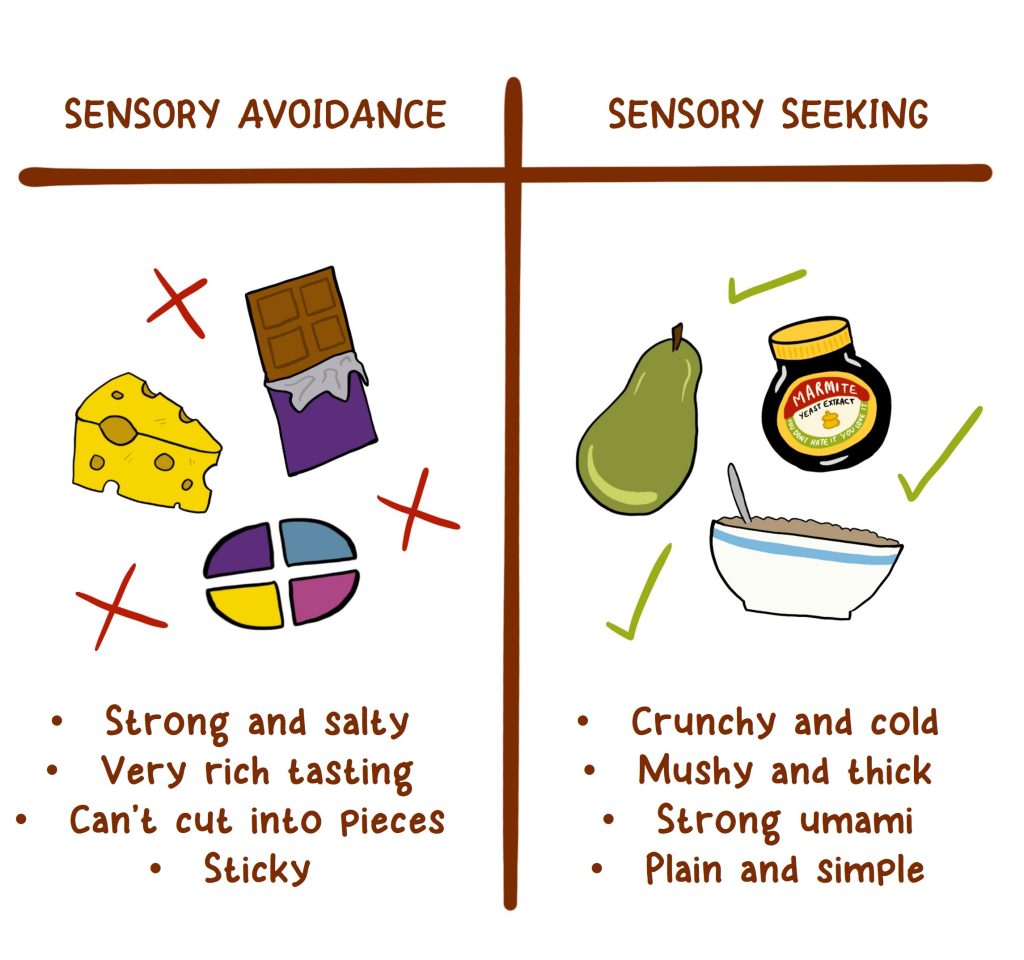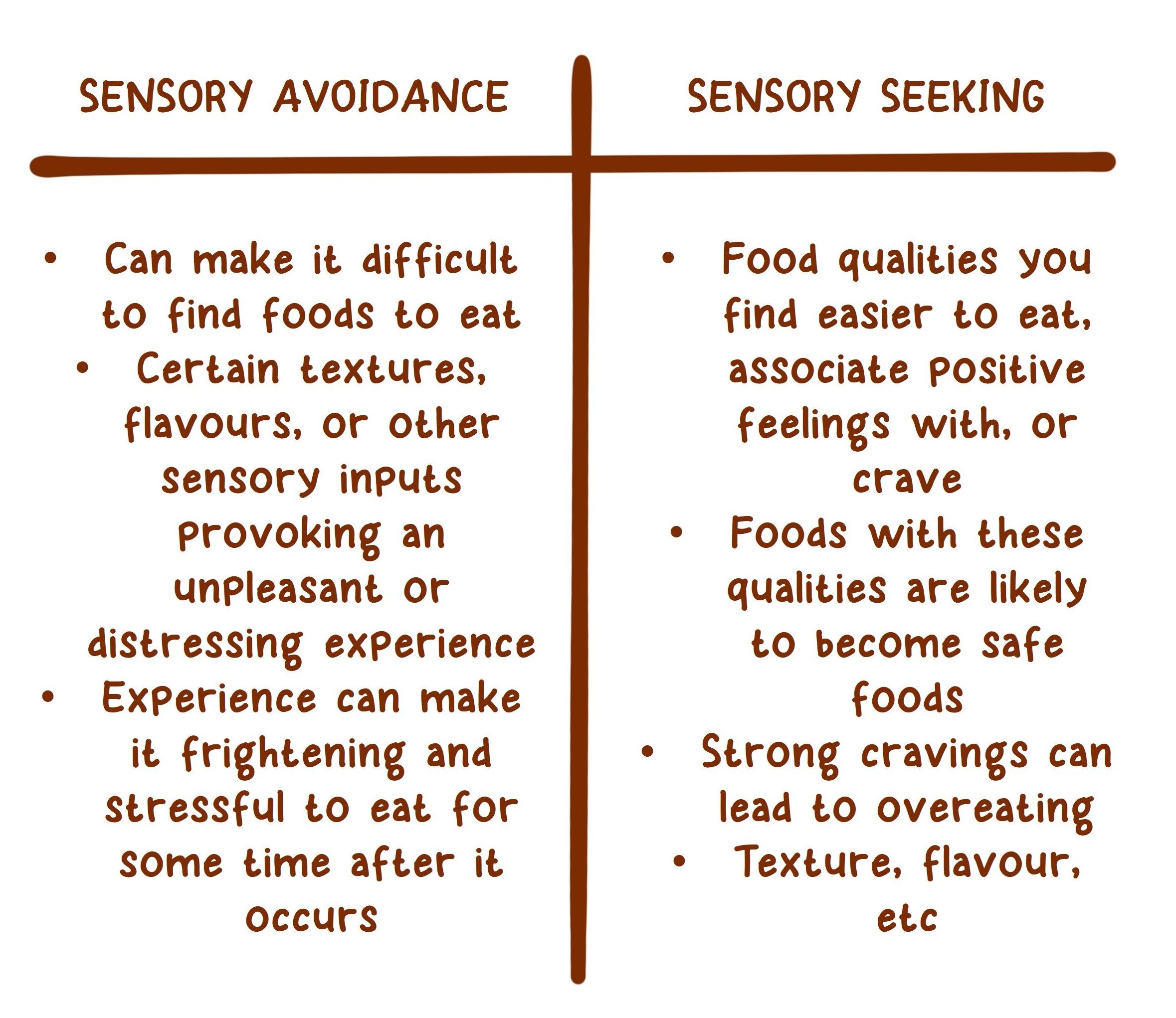I wanted to talk a little bit about something I’ve come to understand more since researching and trying to figure out the intricacies of my ARFID, and that’s sensory seeking and sensory avoidance behaviours. These are a big part of my eating difficulties, as is the case for many autistic individuals, whether they have ARFID or not, and through understanding the thought processes behind them I’ve been able to find more ways to manage!
Sensory avoidance is certainly a much more widely discussed part of ARFID; struggling with certain textures and flavours, which make it difficult to find foods to eat, or to even approach eating, because thinking or remembering a bad experience makes one feel sick. It can also relate to any sensory input, so it might be to do with the texture, the flavour, the appearance, etc.A big sensory trigger for me would be mushy or ripe fruit – a very soft pear or apple can put me off food and make it difficult to think about eating for multiple days after the experience. I really struggle with things that are greasy or leave a greasy residue in my mouth, such as butter, fried food, and even sometimes things like salmon.
And some very stretchy, stringy, sticky things make me stressed from a texture perspective, like hot melted hard cheese. Other foods can just be too strong for me, or make me feel sick because of how intense they are, such as very very chocolatey things, or hard cheese (then again, in some cases, I do really enjoy these foods, just not too often!).
Oh, and appearance is also a big factor for me. If food isn’t laid out in a certain way, or cut up into a certain number of pieces, or if my bread is squashed, it can make me extremely stressed and uncomfortable eating it.
We then come to sensory seeking behaviour – relating to experiences of ‘sensory euphoria’ as I have seen it described by others! Because sensory processing has such impact on austisic individuals, a really positive sensory experience can lead to cravings for it. For some, this can cause bingeing or overeating – and for me, it does dictate what foods I like to have each day, because they make me feel good. I know someone who became very overweight due to how much she craved the sensory aspect of a certain food.
For me, I find the following foods very, very positive sensory wise:

- Very crunchy, cold things – which is why I love to have cold, underripe pears, apricots, and semi-frozen melon, and salad like cucumber
- Hard, crunchy things – toast (providing it’s not hot as then I become stressed about it changing temperature), ricecakes
- Thick, mushy things – this is why I really love Weetabix, Shreddies, and Shredded Wheat, and Greek yogurt (or Quark!), and also mushy peas
- Marmite – I very often have marmite on it’s own! I believe this is due to the umami flavour, as I often find soy sauce satisfies this craving, too!
So, how is all this helpful? Well I now know what to look for when approaching new foods, and I know when I’m a bit stressed and feeling confused about what to eat, I should consider these aspects!! I can make sure that on days I don’t feel able to push myself foodwise, I avoid certain things, and maybe, to feel better, go for other ones! It also helps me explain why I feel so desperate that the pears I get each week are long, and very hard, and why it’s so important that my bread loaf is carried carefully (to not deform the slices)!
Can you identify any sensory aspects of food you seek or avoid?

Leave a Reply